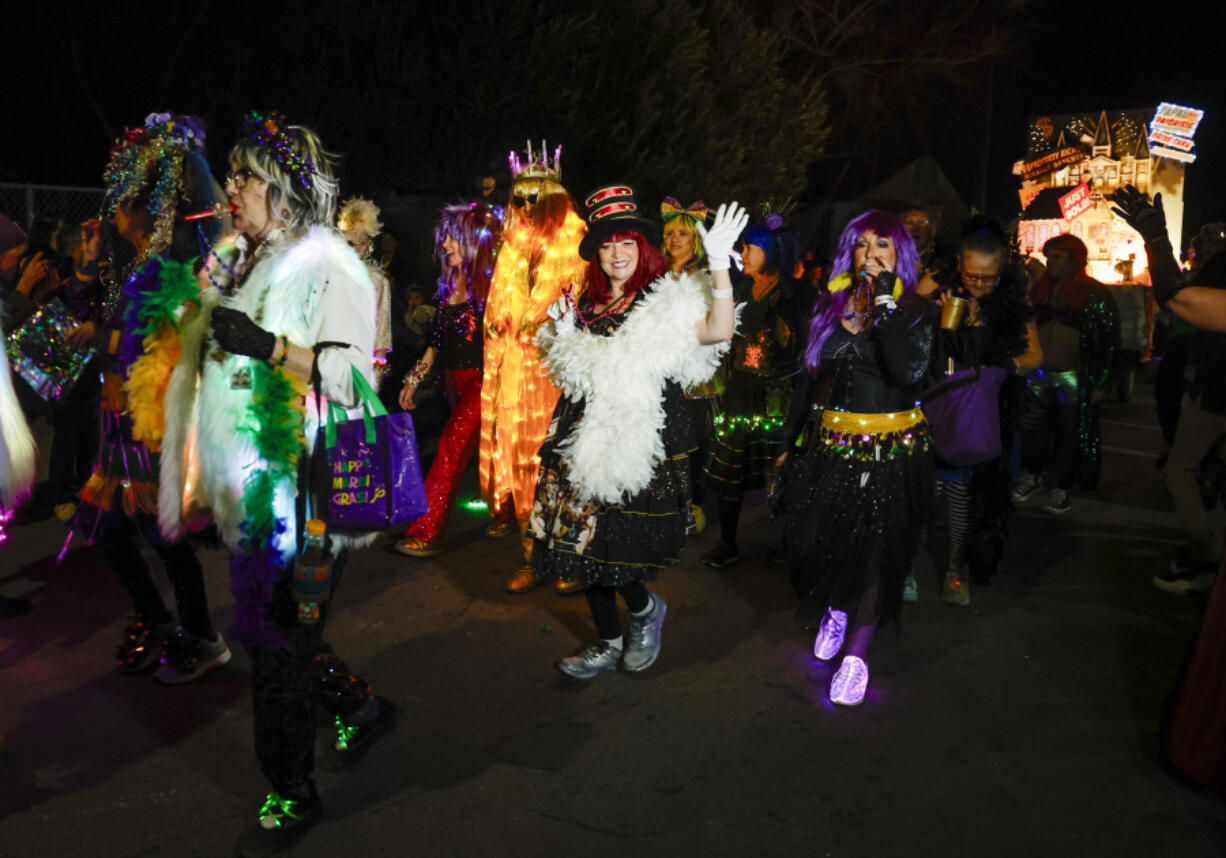NEW ORLEANS — Carnival season 2024 entered its final days in New Orleans on Friday as a parade of “fabulous women and the men who support them” walked the narrow streets of the old French Quarter handing out hand-decorated bras.
The krewe of “Bosom Buddies & Breast Friends” is one of the smaller clubs that have flourished in recent years as the weekslong pre-Lenten bash in New Orleans has evolved. More traditional parades — larger affairs with scores of masked riders on colorful floats — roll through the city Friday night and throughout the four-day end to the holiday. Mardi Gras, or Fat Tuesday, marks the party’s climax and the celebration will be citywide, with costumed revelers jamming the Quarter and parades proceeding from Uptown to downtown with other events in the suburbs.
WHAT’S THE HOLIDAY ABOUT?
While it’s a secular celebration, Carnival in New Orleans — and around the world — is rooted in Christian and Roman Catholic traditions. The season begins on Jan. 6, the 12th day after Christmas, and continues until Mardi Gras, which is the final day of feasting, drinking and revelry before Ash Wednesday and the fasting associated with Lent.
New Orleans has the largest and best-known Carnival celebrations in the U.S., with street parties, fancy balls and boisterous parades. The processions range from neighborhood-based walking clubs — like Friday’s “Bosom Buddies” march — to elaborate, high-tech extravaganzas that feature massive floats laden with flashing lights and giant, animated figures.
HOW DO PEOPLE CELEBRATE THE END?
Carnival celebrations — parties, fancy masked balls and other markers of the season — may start on Jan. 6, but the big buildup to Mardi Gras happens in New Orleans in the final 12 days of the season, with large parades rolling past mansions on St. Charles Avenue and into the downtown area of office buildings and hotels. Large parades also roll through the suburbs and in various areas across the Gulf Coast.
WHAT’S THE VIBE?
The atmosphere varies from neighborhood to neighborhood, and from street to street. Along the parade routes the vibe is family friendly. Groups stake out picnic areas just off the route and food trucks hawk cotton candy, funnel cakes and corn dogs. Families can be seen wandering the streets of the historic French Quarter as well — but the night club scene, which includes strip clubs on Bourbon Street, can get raunchy as Mardi Gras draws nearer.
WHAT DOES ‘THE THROWS’ MEAN?
“Throw” is a noun in New Orleans used to describe prizes that float riders in parades and members of walking krewes give to spectators. The prized throws at “Bosom Buddies” are hand-decorated bras. Participants in the parade of the Zulu Social Aid and Pleasure Club, hand out highly sought-after painted coconuts. At Thursday’s Muses parade, glittery hand-decorated shoes were souvenirs. Shimmery strings of plastic beads are ubiquitous, although some krewes are exploring alternatives out of environmental concerns.
WHERE DID THE BABIES COME FROM?
If someone asks “Did you get the baby?” during Mardi Gras, they’re not asking you whether you’re pregnant. A standard seasonal treat during Carnival is the ring-shaped king cake. Baked inside is a tiny, plastic baby figuring.
“People will pick up a king cake and take it to work, and whoever gets the baby has to bring one the next day, so people are eating it all the time,” food historian Liz Williams said in a recent interview.
WHAT ARE THE BIG PARADES?
The final weekend brings the biggest parades, produced by organizations that borrow traditions from European royalty — anointing kings and queens to rule over the proceedings. The Rex Organization, founded in the 19th century, rolls every Fat Tuesday, with the role of Rex, King of Carnival, filled each year by a different local dignitary. The Zulu Social Aid and Pleasure Club, founded by Black laborers in the early 1900s, also rolls on Tuesday.
Newer “super krewes” started parading in the late 20th century. The best known is Bacchus, which taps a nationally known celebrity as king each year. (This year, it’s actor Kevin Dillon from the TV show “Entourage.”) Bacchus, Endymion, Orpheus and Muses all parade during Carnival’s final days, employing state-of-the-art lighting effects on floats, many of which have local and national celebrities aboard.
WHAT ABOUT CRIME AND CROWD CONTROL?
Large Mardi Gras crowds cause some to worry about a rise in crime in New Orleans — which, like other cities, saw its crime rate rise and police ranks shrink during the COVID-19 pandemic.
The New Orleans Police Department will be joined by more than 100 state troopers, 170 Orleans Parish Sheriff’s Department deputies and more than 200 deputies from other Louisiana jurisdictions.
So far, no major problems have been reported.



